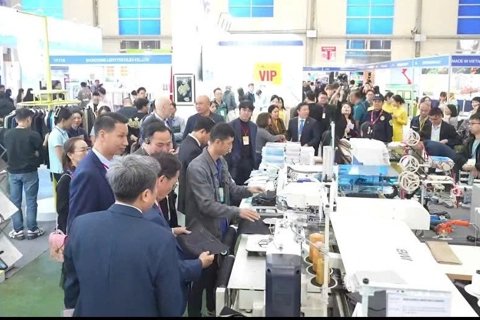Hanoi's second metro line: Symbol of Vietnam-France cooperation
France is ready to contribute to the reduction of carbon emissions in the transport sector by participating in railway projects in Vietnam.
The inauguration last month of the elevated section of the Nhon-Hanoi metro line, the second in Vietnam, is a symbol of Vietnam-France cooperation in sustainable urban transport.
French Ambassador Olivier Brochet made the statement at a press conference held in the capital city on September 11.
The project has been carried out with technology and expertise from leading French companies in the field, the official said, stressing that the inauguration of the elevated section demonstrates the capacity of Vietnamese and French workers in such an ambitious railway project.
Olivier Brochet also underlined France's commitment to supporting Vietnam's transition to a low-carbon economy by providing the best technological solutions in the world.
With the great experience gained from the Nhon-Hanoi Station metro line, French companies are willing to contribute to the reduction of carbon emissions in transport by participating in railway projects carried out in Vietnam, the Ambassador added.
Elevated section of Nhon-Hanoi Station metro line. Photo: Anh Kiet/The Hanoi Times |
Speaking at the event, Nguyen Ba Son, Deputy Head of the Hanoi Metropolitan Railway Management Board, thanked the French Government for its funding and enthusiastic support during the construction of the metro line, as well as French contractors and consultants for their contributions to ensuring the progress and quality of the project.
The eight-kilometer elevated section of the Nhon-Hanoi station metro line, which began commercial operation on August 8, carried more than 390,000 passengers in its first week. On its opening day, it serviced 37,200 passengers. In particular, Son said, the line has been running an average of 200 trips a day.
"The city has already achieved significant milestones with the first metro line of Cat Linh-Ha Dong and the elevated section of the Nhon-Hanoi Station metro line. Both have seen high public acceptance," he said.
The elevated section from Nhon to Cau Giay will help reduce traffic congestion in the capital. The underground section from Kim Ma Street to the front of Hanoi Railway Station, with four underground stations and an underground ramp, will be operational by the end of 2027. The line will be extended by an eight-kilometer underground section from Tran Hung Dao Street to Hoang Mai District.
The Nhon-Hanoi Station metro line stretches 12.5 km from Nhon in Nam Tu Liem District to Ha Noi Railway Station in Dong Da District, with eight elevated and four underground stations. The elevated section from Nhon to Cau Giay is 8.5 km long, while the underground section from Cau Giay to Hanoi Railway Station is 4.0 km long.
Work on the project, estimated to cost more than VND34.8 trillion (US$1.37 billion), partly from French ODA, began in 2009 with an initial completion target of 2015.
Work on the metro line began in September 2010 and was originally scheduled to be completed in 2016. However, the project has been delayed several times for various reasons, increasing the total investment from $712 million to $1.4 billion.
The metro line consists of 10 trains with a maximum speed of 80 kilometers per hour. Each train has four cars with a maximum capacity of 236 passengers per car. The line is operated by a total of 353 employees.
Hanoi plans to build 96.8 km of metro lines by 2030, at a cost of $14.6 billion. In the following five years, an additional 301 km will be built at an estimated cost of $22.5 billion.











